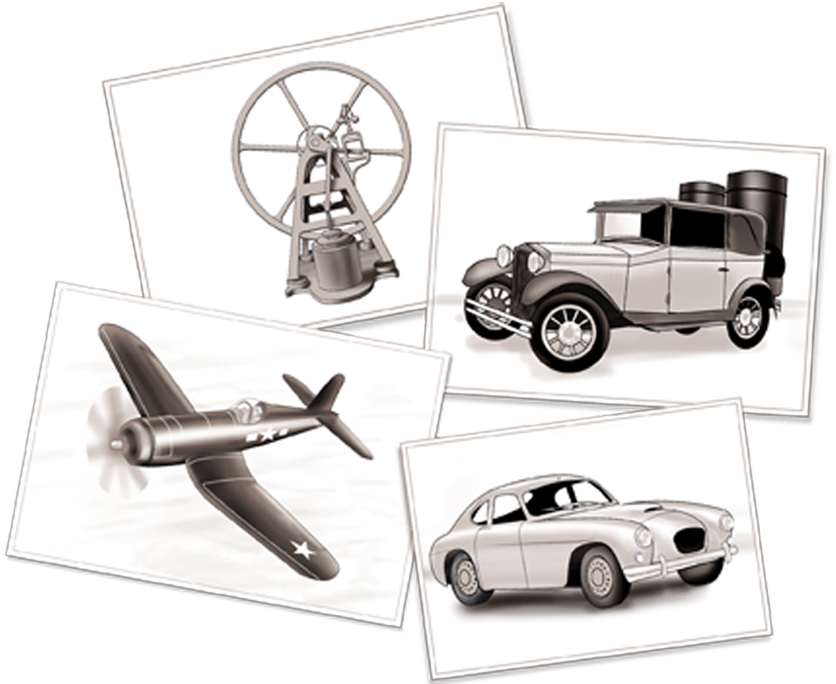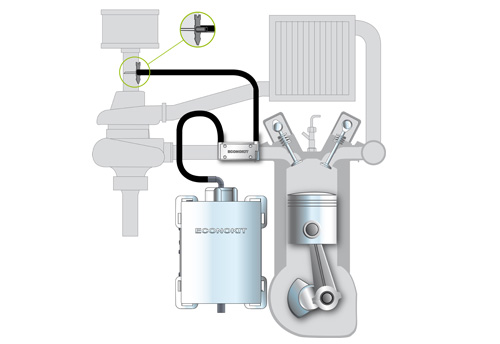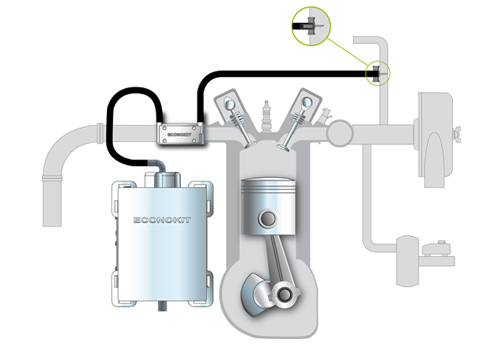
At the beginning of the 20th century, the engineer Pierre Clerget, one of the creator of the first diesel engine, discovers the interest to add steam of water in the engines to improve its efficiency. Injected as addition to the fuel in a period engine, this water in the form of gas allows its power to double. He also points out that it increases the engine’s longevity, reduces the fumes and its usual fouling.
During World War 2, the water doping systems are installed on German and American fighter jets and allow them to punctually increase their engine’s power during fighting.
In 1974, the mechanic Jean-Pierre Chambrin files for a patent on an arrangement device for engine with fuel and added water supply. The Chambrin system uses electric currents with high and low frequency with a mix of water and alcohol heated to 800 degrees. Its aim was to favor the separation of the H2O molecules into hydrogen and oxygen, for the combustion.
In the 80s, the American Paul Pantone publishes plans of a water-doping system. The process uses in part exhaust gas to heat up the mix of water and fuel. The emitted steam, are directed between the inner shaft called “metal conduit” in order to charge electrically the molecules. Once in the engine, these gases allow to reduce fuel consumption and polluting emissions.
Since then, numerous researches have been done in this domain but not one fuel-saving device had been a reliable solution nor had gotten concrete results on the field.
The friction of the steam on the sides of the reactor increases the potential difference between the Oxygen molecule and the hydrogen. In their natural state, the fuel molecules form a long chain of carbon and hydrogen atoms which, because of electronic attractions, fold back on themselves to form a “ball”.
When the polarized water molecules come into contact with the fuel molecules, they influence their electrical charge, which make them unfold.
In the case of a classic combustion, the molecules don’t burn completely, which produces un-burnt gases that are rejected by the engine’s exhaust. When they are unfolded by the contact with the polarized water molecules, the fuel molecules burn better.
The pressure on the valve is stretched out and the quantity of un-burnt gases at the exhaust lowers. The steam injection in the cylinder allows the temperature to lower in the combustion chamber. The reduction of this temperature has for effect to reduce the production of NOx, which frees up the oxygen. This last one therefore becomes available for the fuel combustion, reducing the production of polluting gases. In this system, the thermic effect and the electric effect are additional.



We are a French company which exclusively promotes and distributes Econokit’s products worldwide. Econokit was born from the common will of researchers and one entrepreneur to propose a truly environmental product. With Econokit, everyone can effectively contribute to the respect of our planet. But besides the environmental aspect, Econokit favors fuel savings. Our products are compatible with all types of combustion engines equipping numerous machines from everyday life of private and professional people (cars, trucks, buses, agricultural machines, handling machines…).
We care to propose solutions that consider the world’s major concerns. In the face of the awareness of very polluting matter of traditional engines and the severity of the economic crisis, we chose to develop for the fist time on the worldwide market a device answering both of these two concerns.
Our commitment joins in a sustainable development and public health approach. We constantly invest in the research around our products to improve their quality and efficiency. We have decided to have our device tested by a world leader: BUREAU VERITAS, to measure the emissions of polluting gases. (BUREAU VERITAS rapport N° : 2415961/1/1/REV1 or synthesis from Econokit).
In the future, we wish to implant our products throughout the world so that they are available for all. Indeed, our aim is to democratize the access to our device and allow as much people to drive cheaper and cleaner. We believe that vehicles with combustion engines will be here for numerous years on the roads before disappearing one day, to give birth to cleaner vehicles.

 English
English

